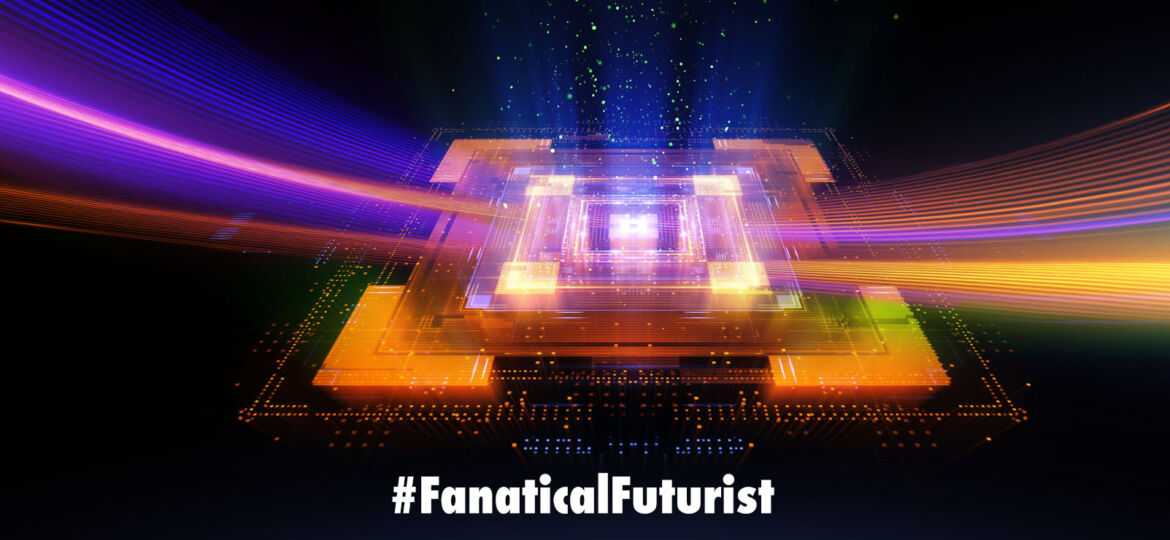
WHY THIS MATTERS IN BRIEF
Today’s quantum computers have less than 100 qubits and generate huge amounts of heat that reduce their computing accuracy, so we need new tech if we’re going to create bigger quantum computers with thousands or millions of qubits.
 Interested in the future and want to experience even more?! eXplore More.
Interested in the future and want to experience even more?! eXplore More.
If we are ever going to be able to harness the immense power of quantum computers, computers that are over 100 million times more powerful than today’s computers, properly, then the results they have to produce from their computations are going to have to be accurate. And that’s a problem because today almost every quantum computer that’s being developed suffers from a noise problem at the quantum level, which is why Microsoft, for example, are experimenting with majorana fermions to create their highly accurate quantum computers, and it’s also why quantum computers have to be maintained in cryogenic chambers held at near Absolute Zero to minimise the likelihood of their qubits, the quantum equivalent of binary digits, inadvertently flipping states to give the wrong answer, which, as you can imagine, is another headache.
This week Google announced their new quantum controller, a new type of device that can help create more accurate quantum computers without any of the major downsides of today’s quantum computer control electronics, and the company says it’s “made significant progress toward an efficient, reliable, and scalable means of controlling quantum systems’ electronics,” systems it hopes will someday solve computationally complex problems beyond the reach of even today’s most powerful classical machines and supercomputers.
At the International Solid State Circuits Conference in San Francisco, researchers on the company’s AI Quantum team unveiled an entirely new type of cryogenic controller fabricated using CMOS technology and designed in partnership with University of Massachusetts professor Joseph Bardin. Google says the 1 millimeter by 1.6 millimeter controller, which provides an instruction set for single qubit operations, runs at between room temperature and 3 degrees Kelvin, which is about -454.27 degrees Fahrenheit, and consumes less than 2 milliwatts of power – 1,000 times less power than Google’s current control electronics.
Currently, Google runs programs on its prototypical 72 qubit Bristlecone quantum processor by applying gigahertz-frequency analog signals produced by digital-to-analog waveform generators packaged in server room racks. These signals travel along coaxial cables to the processor’s qubits, manipulating their states and measuring the outcomes. Each qubit has two control lines for a total of 144 unique control signals, and the generators dissipate about a watt of waste heat per qubit — an arrangement that isn’t particularly conducive to chips containing more qubits. Research suggests that first-generation quantum computers will require as many as 1 million qubits, and Google estimates that just 150 waveform generators could overwhelm its cooling system by 1,500 times.
Google’s new custom integrated circuits, by contrast, control qubits from within the cooling system, reducing the number of physical connections needed to and from quantum processors. According to Google, baseline experiments for the controller hardware show “similar” performance compared with its standard qubit control electronics.
Bardin and Erik Lucero, staff research scientist and hardware lead on Google’s AI Quantum Team, caution that it’s merely a first step toward a “truly scalable” qubit management system — the controller only addresses a single qubit, and it still requires several connections to room temperature. Still, they say it’s promising progress in the pursuit of reducing the energy required to control qubits while maintaining the control required to perform “high-quality” qubit operations.
“Increasing the number of physical qubits needed for a fault-tolerant quantum computer while maintaining high-quality control of each qubit are intertwined,” Bardin and Lucero wrote in a blog post, “and exciting technological challenges that will require inventions beyond simply copying and pasting our current control architecture.”
Source: Google
















